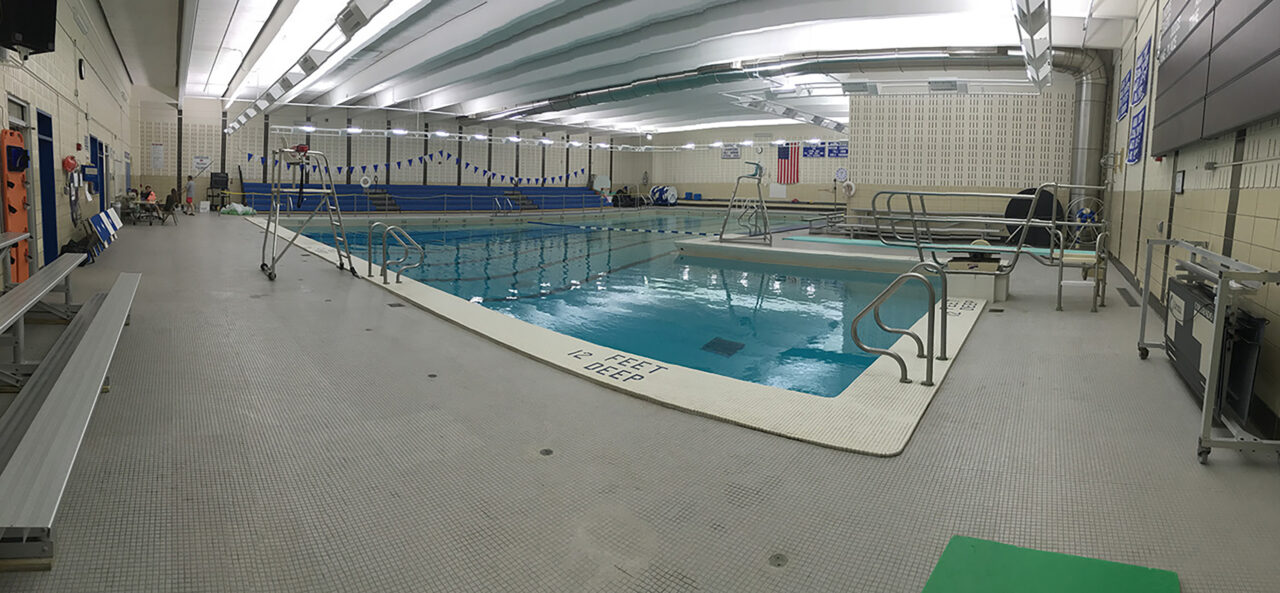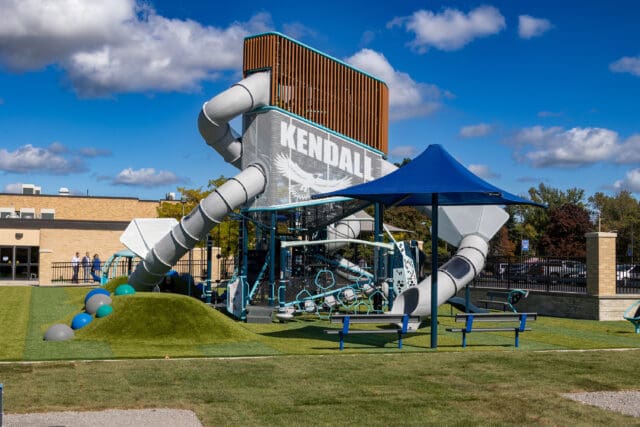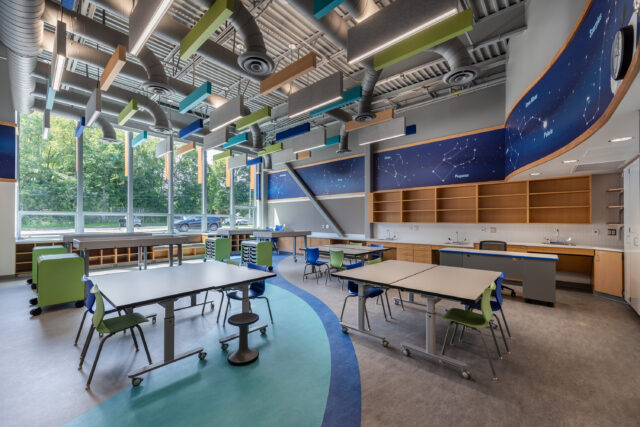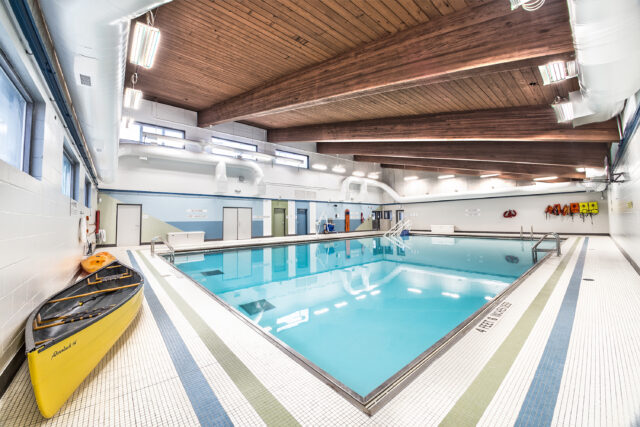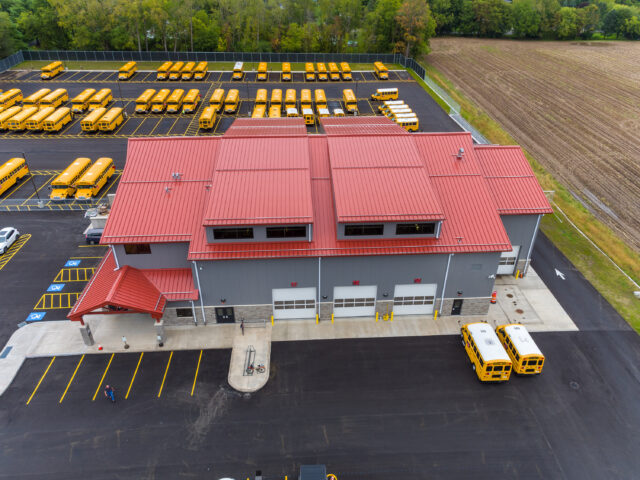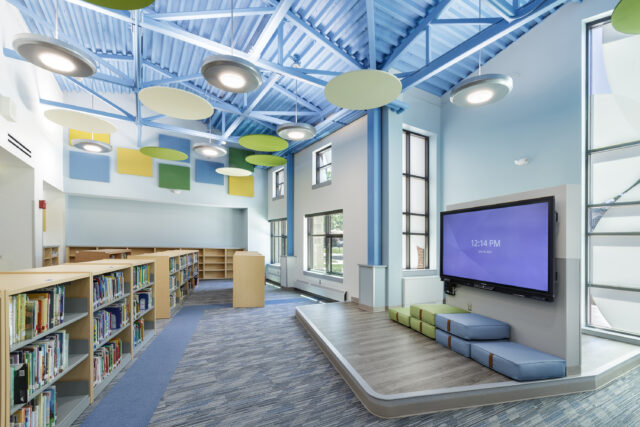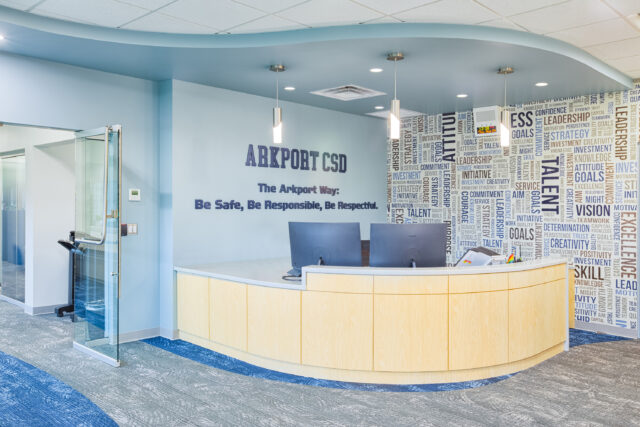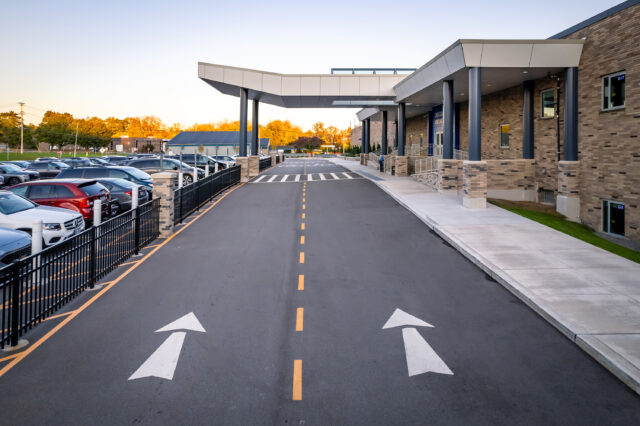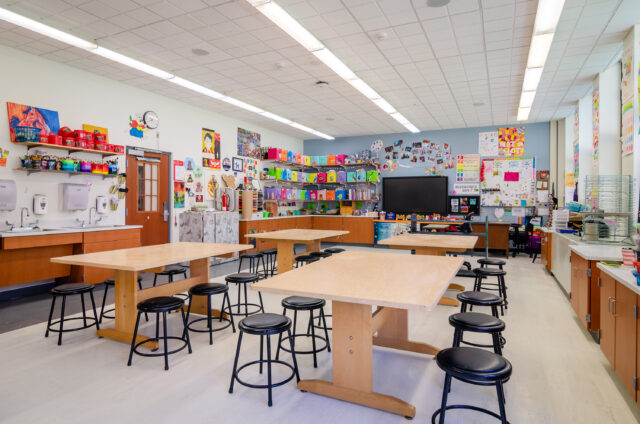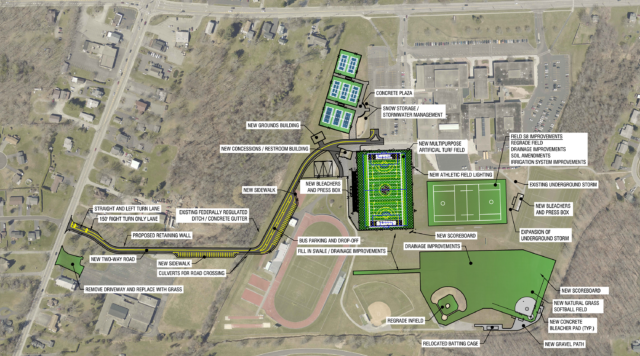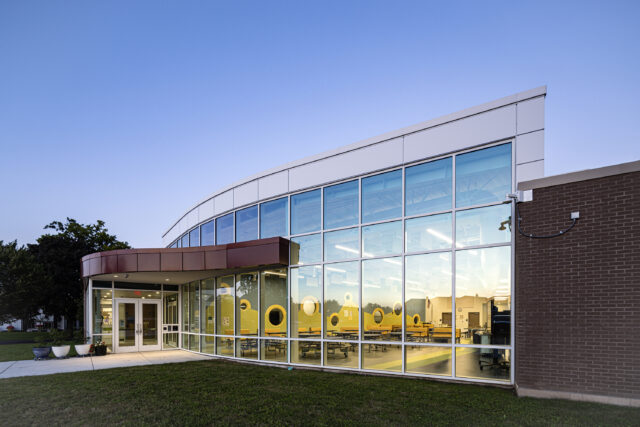NYSERDA FlexTech Energy Study for Brockport Central School District High School
Improving Brockport High School’s Geothermal Efficiency
LaBella was selected to improve the energy efficiency and control of Brockport High School’s geothermal heating and cooling systems, boiler sequencing, and controls related to supplementing the geothermal system, as well as the swimming pool natatorium air handling unit and the pool water heat exchanger. Our team provided a study of the existing systems, including a review of existing conditions, and presented potential options to improve energy efficiency, reduce maintenance costs, and improve controllability.
The existing geothermal system, which was installed in 1999, consists of 100 vertical bores drilled approximately 400 feet deep with a 20 circuit piping arrangement. The geothermal ground loop was configured as a variable primary pumping only system with 800 GPM pumps in a parallel arrangement. Five 30-ton, water-to-water heat pumps are located in the boiler room that provide hot water to air handling units 1, 2, 3, and 4. The air handling unit’s hot water loop is tied into the existing building’s hydronic heating loop via a shell and tube heat exchanger. Another branch from the ground loop serves multiple heat pumps that serve classrooms and offices.
The three-way valve controlling the hot water flow to the shell and tube heat exchanger used to supplement the hot water loop served by the five water-to-water heat pumps is consistently open, indicating the hot water loop served by the heat pumps is not meeting setpoint. The building’s hydronic boiler heating plant was not sized to fully supplement the heat pump loop, causing other equipment in the building to receive water at temperatures less than the current reset setpoint. This equipment includes other air handlers and heat exchangers, most notably the pool natatorium air handler and the pool water heater heat exchanger. This was causing low natatorium space temperatures, resulting in increased pool water evaporation, increased make-up water heating, decreased bather comfort, and increased pool water treatment chemical usage.
